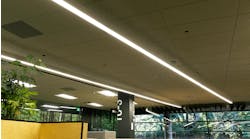As we look ahead to 2017 and beyond, there seems to be quite a bit of uncertainty out there on many fronts. I believe a lot of this uneasiness is a result of the outcome from the highly charged election season we just endured. I’m not going to discuss my own political views on this page, but I do feel it’s important to give some thought as to how this new administration’s game plan might affect the construction market in the next few years.
Here’s a list of some of the more widely known campaign proposals I recall, along with my take on how they could affect various construction market segments.
• If the Affordable Care Act is repealed, and new health care legislation is proposed, this could hold health care construction in check and limit growth in this market sector.
• If the initial proposals of investment for new infrastructure work come through, this would drive growth in the nonbuilding construction category (e.g., highway and street, water supply, and sewage/wastewater projects).
• If there’s a “backing off” of federal regulations in the energy sector, this might provide new life for oil and coal type projects. This could also have a negative effect on renewable and conservation type projects.
• If the U.S. renegotiates or withdraws from the North American Free Trade Agreement (NAFTA), this could provide a boost to the manufacturing construction sector.
But, as we all know, a number of these what-if scenarios will not play out as planned for many different reasons. So it’s imperative that we also review projections put out by the well-respected construction organizations, research firms, and construction economists to provide you with a well-rounded and balanced outlook of future work. Where do these experts see the market heading in 2017?
Related
According to Dodge Data & Analytics’ “2017 Dodge Construction Outlook,” total construction starts are forecast to advance 5%, with gains of 8% in both residential and nonresidential building and a decline of 3% in nonbuilding. A look at the individual market sectors reveals the following: single-family housing (12%), multi-family housing (2%), commercial building (6%) — following a 12% gain this year, institutional building (10%), manufacturing (6%), public works (6%), and electric utilities/gas plants (-29%) — following a 26% decline this year.
FMI’s 3rd Quarter “Construction Outlook Report” is a bit more conservative, forecasting a 4% gain across the board in residential and nonresidential buildings, as well as in the nonbuilding structures category.
For a broader look at next year’s market potential, we turn to the American Institute of Architects’ (AIA) Consensus Construction Forecast. This forecast blends data from Dodge, FMI, CMD iSqFt, HIS Economics, Moody’s Economy.com, Associated Builders and Contractors, and Wells Fargo to come up with an average projection for the group. It projects a 6.7% increase for the nonresidential sector, 4.7% for industrial, and 6.7% for institutional.
Based on all this data, it looks like we’re on track for another year of expansion. Happy New Year!




